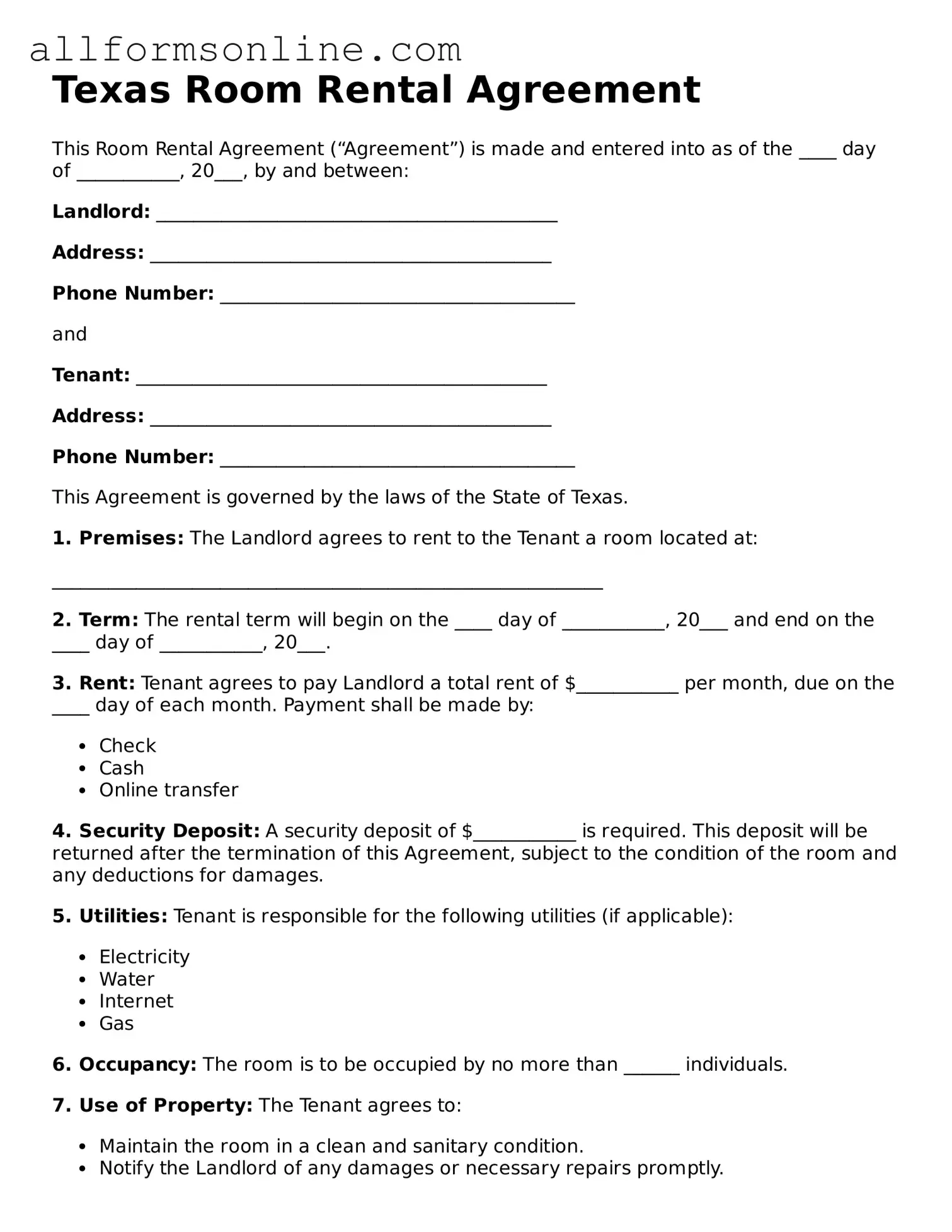What is a Texas Room Rental Agreement?
A Texas Room Rental Agreement is a legal document that outlines the terms and conditions between a landlord and a tenant for renting a room in a property. This agreement specifies the rights and responsibilities of both parties, including rent payment details, duration of the rental, and rules for the use of common areas.
Who should use a Room Rental Agreement?
Anyone renting out a room in Texas should use a Room Rental Agreement. This includes homeowners renting out a spare room, individuals leasing a room in a multi-tenant property, or landlords managing rental properties. The agreement helps protect the rights of both the landlord and the tenant.
What are the key components of a Texas Room Rental Agreement?
Key components typically include the names of the landlord and tenant, property address, rental amount, payment due dates, security deposit information, lease duration, and rules regarding the use of shared spaces. It may also cover maintenance responsibilities and conditions for terminating the agreement.
Is a security deposit required in a Room Rental Agreement?
While a security deposit is not mandatory, it is commonly included in Room Rental Agreements. If a deposit is required, the agreement should specify the amount, the conditions under which it may be withheld, and the timeline for its return after the lease ends.
How long is a typical rental period in a Room Rental Agreement?
The rental period can vary based on the agreement between the landlord and tenant. Common durations include month-to-month leases or fixed-term agreements lasting six months to a year. The rental period should be clearly defined in the agreement.
Can a tenant make changes to the Room Rental Agreement?
Any changes to the Room Rental Agreement must be agreed upon by both the landlord and the tenant. Modifications should be documented in writing and signed by both parties to ensure clarity and enforceability.
What happens if the tenant fails to pay rent?
If a tenant fails to pay rent, the landlord may follow the procedures outlined in the Room Rental Agreement. Typically, this may involve providing a notice to the tenant, allowing a specific period to remedy the situation, and potentially initiating eviction proceedings if the issue is not resolved.
Are there any local laws that affect Room Rental Agreements in Texas?
Yes, local laws and ordinances can affect Room Rental Agreements in Texas. Landlords and tenants should familiarize themselves with state laws regarding rental agreements, tenant rights, and property management. It is advisable to consult local regulations to ensure compliance.
How can disputes be resolved between landlords and tenants?
Disputes can be resolved through various methods, including direct communication, mediation, or arbitration. If necessary, legal action may be pursued in small claims court. The Room Rental Agreement may also include provisions for dispute resolution, which should be followed.
Is it necessary to have a written Room Rental Agreement?
While verbal agreements can be legally binding, having a written Room Rental Agreement is highly recommended. A written document provides clarity, reduces misunderstandings, and serves as a record of the agreed-upon terms, making it easier to enforce the agreement if disputes arise.
